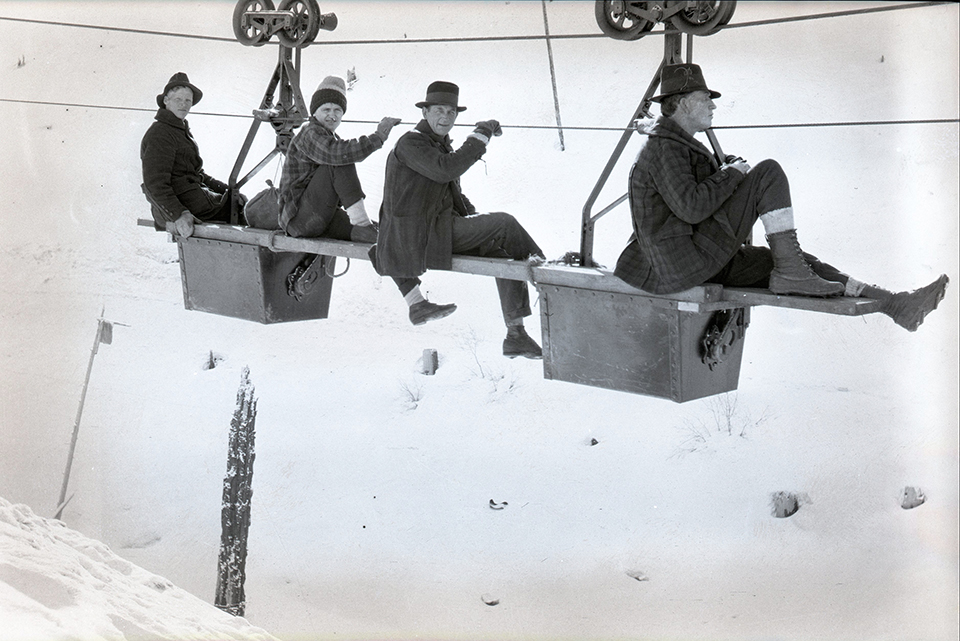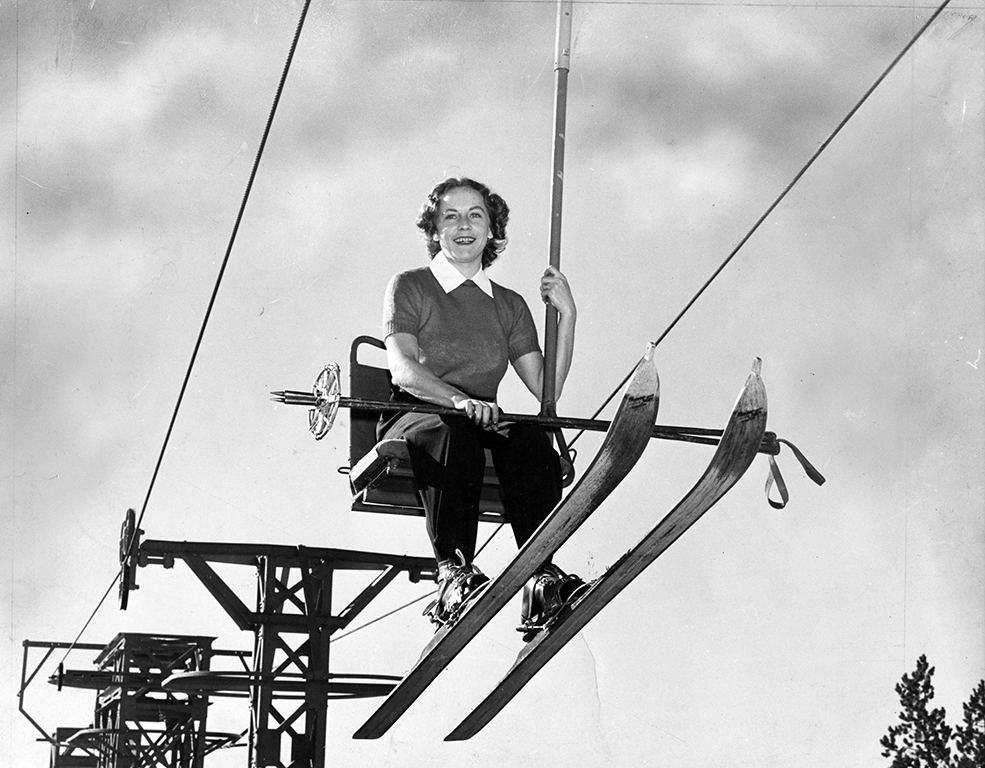A review of the new book about Spokane’s Riblet Tramway Company
If you were to ask someone how they associate the name Byron Riblet with our area, the likely response would be chairlifts and Arbor Crest Winery. While the former is accurate, the latter is nowhere near the truth. The Riblet Tramway Company did design and construct some of the earliest chairlifts in the country during the pre-war period and beyond, but it was Bryon’s flamboyant younger brother and business partner Royal who constructed the magnificent mansion (now home to Arbor Crest Winery) overlooking the Spokane River, and also took credit for many of his older brother’s innovations in the tram-building industry.
As time passed, it seems that Byron Riblet was forgotten as an inventor of tram systems that facilitated the removal and transport of precious metals, grains, and timber from remote locations around the world. And forgotten as the brains behind numerous land development and public works projects in the Spokane area that are still in existence today. In his book Byron Riblet: Forgotten Engineering Genius, author Ty A. Brown details Byron Riblet’s incredible story of early success, near-failure, and newfound success in a rich narrative accompanied with fascinating images of the innovations that Byron Riblet brought to life.

Riblet’s impact on the Spokane area began in the late 1800s, when he engineered railroad tracks for both freight and passenger trolley cars. He was also instrumental in the creation of several much-needed public water works. During the rebuilding period following the Great Spokane Fire of 1889, he was at the forefront of plotting several new neighborhoods and the corresponding infrastructure. The start of Riblet’s true success, however, came at the end of the century, when he designed and implemented an aerial tram system used to transport ore from mines in the rugged mountains of British Columbia.
Riblet’s reputation and business success in the tram industry skyrocketed in the three decades following his initial project. The Riblet Tramway Company designed and installed trams around the world, solidifying its position as a premier mining tramway designer and manufacturer. The company’s greatest project was a thirty-four-mile-long tram constructed in the far-flung mountains of Peru, where it carried ore from a massive silver mine. As the 1920’s came to a close, the future of the Riblet Tramway Company seemed bright indeed.
That all changed with the stock market crash of 1929 and the ensuing years of the Great Depression. Faced with a lack of new projects and a mountain of debt, Riblet was forced to sell much of his personal property to keep his company afloat. His palatial home on the banks of the Little Spokane River was destroyed by fire, never to be rebuilt. He fired his brother Royal due to questionable business practices. To escape this new reality, Byron turned to alcohol, quickly becoming a notorious drunk. The end, it appeared, was nigh.

Riblet’s savior came not in the form of new mining tram projects, but from the sport of skiing. In the late 1930’s, Riblet Engineer Carl Hansen approached Byron about using the company’s tram knowledge to build chair lifts. Hansen had heard about the first chairlift installed in the United States at Sun Valley and saw a unique opportunity. Riblet thought otherwise, but agreed to the idea. As a result, the company would design and install what would become known as the “Magic Mile” chairlift on Mount Hood; the longest chairlift in existence at the time, and the first to use metal towers. The company would go on to install Washington State’s first chairlift on Mount Spokane in 1945, and over 400 other chairlifts across the country in the decades that followed, thus earning itself a place in the annals of skiing history. Although Byron Riblet passed away in 1952, his legacy, and amazing story, will not be forgotten, thanks in large part to the diligent research and writing conducted by Ty Brown in crafting this book.
The book is available at Auntie’s Books in Spokane, Sety’s ACE Hardware stores in Wandermere and Chewelah, at the Spokane Valley Heritage Museum, at the Pend Oreille County Museum, and on Amazon. //
Brad Northrup holds an MA and BA in History, and has an affinity for unique stories from the past. His work has appeared in Out There Outdoors since 2013.













